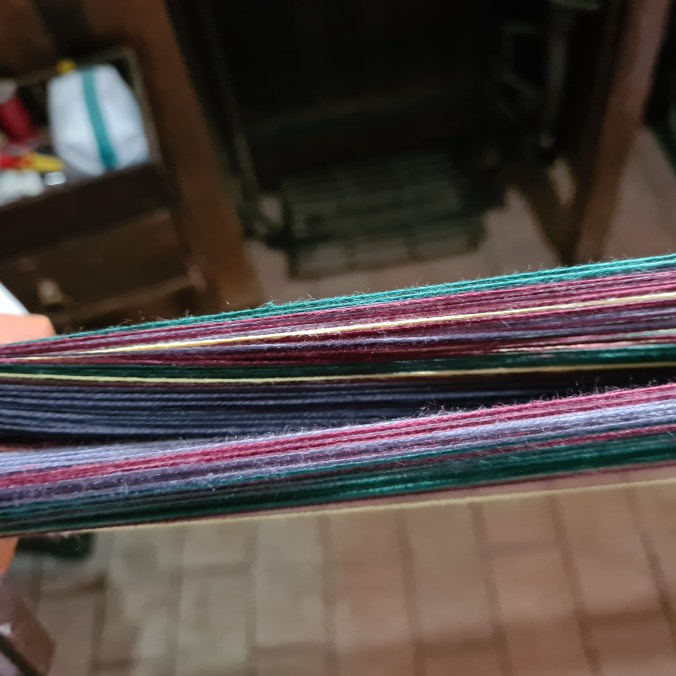I have been interested in learning to weave tartan in a sporadic sort of way for a while now. I have friends with Scottish ancestry who I would like to make tartan for and the whole history of how tartan came to be is just really interesting. Tartans did not come from Scotland alone, they were a part of a lot of European cultures and came about as a way of using varied dye lots in a more or less deliberate looking pattern. That sort of reasoning is really what attracts me to tartans; a lot of my crafting is of the I-meant-to-do-that mistake variety and I love finding historical kindred spirits.
Natural dyes being what they are, even if you gather the dye material from the same place at the same time of year and use it in the exact same way on the exact same materials, you will probably end up with a different shade (if not colour) than you got last time. I can see why a weaving pattern that incorporates many different shades and colours in a harmonious way would be an asset to any weaver, and so the tartan was born. Then, in more modern times, we began to register and record our tartans and they became like identifying plumage to a bird. After they began to be associated with clans, they had to be made with a certain set of colours and in a specific pattern.
I found the Scottish Register of Tartans which I promptly joined, as I discovered that they will email you the weaving pattern for any tartan registered with them. The patterns are a bit hard to understand, but I got there in the end. They include the colours and shades, right down to approved dye lots for each tartan (it took ages to figure that bit out)
This is what they sent me whe I asked for the Munro tartan;
Threadcount:
G8AS8G8R64B4Y4R12B24R12Y4B4R12G64R12B4Y4R96
Pallet:
AS=CC4438ANC SCARLET;R=C80000RED;G=006818GREEN;Y=E8C000YELLOW;B=2C2C80BLUE;
Threadcount given over a half sett with full count at the pivots.
Suffice it to say that I read a lot about tartan weaving to be able to decipher that lot. The reference to ‘pivots’ gave me the most trouble. Eventually I found a reference to the fact that the ‘pivot’ is the point where the pattern starts to repeat itself in mirror image. If you don’t understand that, you are not alone, it took me ages, and I’m not sure I’ve got it right yet.

I decided to make some tea towels to give the pattern a go. Of course I didn’t have the right colours, but I wanted to make my mum some tea towels anyway, so I warped up the closest colours I had.








Hemming has always been a problem for me. I’m just a really messy hemmer. These hems are not too bad though.

It’s not a proper tartan of course; the weave is not twill (just plain weave) and the balance isn’t perfect (my squares are rectangles not … squares), but as a first try, I’m ridiculously proud of my tea towels and I think my mum will like them.
























































































